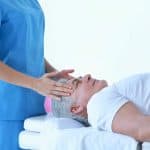

 Want to earn continuing education credit for this article? Learn more.
Want to earn continuing education credit for this article? Learn more.
Can someone who had diabetes safely receive massage therapy? Does it matter which type of diabetes, or how long a person has had it? What are the signs of low blood sugar? What happens if a person has a diabetic episode while getting a massage? With diabetes on the rise, it is important to know what to look for and what to do.
What Is Diabetes?
There are several forms of diabetes, but they break down in to two basic categories: insulin dependent and non-insulin dependent.
Within the insulin dependent category there is diabetes mellitus 1 (also known as Type 1 diabetes or juvenile diabetes) and diabetes insipitus. Untreated, these can be fatal, but treatment is relatively easy and the diabetes is controlled through the use of insulin. Though they have similar names and symptoms, and both are insulin dependent, the causes are entirely different.
Type 1 diabetes stems from autoimmune problems with the insulin-producing cells of the pancreas being destroyed, leading to a lack of insulin which then causes an increase in blood and urine glucose.
Diabetes insipidus has a long list of causes, the most common type being a neurological form with nephronic (kidney related) close behind. It can also be gestational* (caused by pregnancy) or caused by drug use, alcohol and sometimes by medication or certain medical interventions (such as removal of part of a pancreas).
Diabetes mellitus type 2 (also known as Type 2 diabetes or adult-onset diabetes) falls in to the non-insulin dependent category and accounts for approximately 90 to 95 percent of all diabetes. People that are not physically active, overweight, or obese are more likely to develop Type 2 diabetes.
All the forms of diabetes share certain symptoms such as excessive thirst and frequent urination. Insulin dependence diabetes generally results in an unhealthy loss of weight. While weight loss is encouraged with non-insulin dependent diabetes, excessive weight is its primary cause.
Safe Massage Techniques
Most massage techniques can be used on someone with diabetes as long as their condition is stable and they have healthy, intact skin. Because of the possibility of neuropathy, it is generally advised to stay away from any deep tissue massage, as the person may be experiencing pain or have a lack of sensation – and would not be able to provide adequate feedback with regard to pressure.
Massage Precautions for Diabetics
An important thing to be aware of is that a full body massage can affect blood sugar. Some informal studies have shown that it can lower it between 20 and 40 points, which can result in a hypoglycemic episode in a diabetic client.
One of the main things you may encounter in a person with diabetes is peripheral neuropathy. Approximately 50 percent of diabetics have some form of neuropathy with the highest rates being among those who have had the disease for at least 25 years. Neuropathy can affect sensory nerves, motor nerves and autonomic nerves or any combination. It can result in a lack of feeling or intense pain. Nerves furthest from the brain are often the first ones to be affected, hence the term peripheral neuropathy referring to neuropathy in the extremities.
As with any massage the usual contraindications should be observed. Do not massage near any open sores, wounds or rashes. Additionally, the area used for recent injections should also be avoided.
Make sure you are familiar with what to do in a time of diabetic crisis. Know the warning signs, which include (but are not limited to):
- excessive sweating
- feeling faint or dizzy
- heart pounding
- shaking or trembling
- sudden impaired vision
- inability to waken
- personality change
These are all signs of rapid onset hypoglycemia (low blood sugar) and can be serious. If a client is known to be diabetic and shows these symptoms, have them take glucoses tablets (the client may have them), or give them juice or something else with sugar (no artificial sweeteners or diet anything – the client needs real sugar). Do not give them insulin and do not give anything by mouth if the person is unconscious. If there is no improvement, or if the conditions worsen, call 911.
High blood sugar is less of a problem. It usually comes on slowly. It can be caused by diet, stress or medication. Other than excessive thirst and urination, there are no outward signs. High blood sugar and only be definitively determined by a blood test.
For the safety of your client, always do a thorough intake. If your client has diabetes, make sure you know which kind and what medication, if any, he or she is taking. Know what to do in an emergency. Massage can be a safe modality for diabetics if the right precautions are taken.
* Author’s Note: Gestational diabetes first occurs during pregnancy and has no symptoms. It occurs in about 2 to 10 percent of pregnancies in the United States. A woman needs to be tested for this no later than between the 20th and 24th weeks of pregnancy. If left undiagnosed and untreated, gestational diabetes can have serious negative effects on the child, including excessive birth weight, jaundice, seizures and respiratory distress. Studies have also shown the children to be twice as likely to be diagnosed with Attention Deficit Hyperactivity Disorder (ADHD) and at risk for developing Type 2 diabetes.
Earn continuing education credit for this article contained in our Common Pathologies & Complaints series. Click here to enroll.















